Silence and Violence: The Complete History of Tom and Jerry

Say what you will about speech patterns or styles of jeans, but the real generational divide may very well be whether your childhood TV habits included friendly blobs demonstrating the value of teamwork and kindness or an idiot cat’s singleminded quest to murder an adorable mouse. Of course, Tom and Jerry goes all the way back to 1940, and they starred in a feature film (no matter how poorly received) in 2021, so perhaps we are, in fact, all connected by cartoon violence.
Jasper and ???
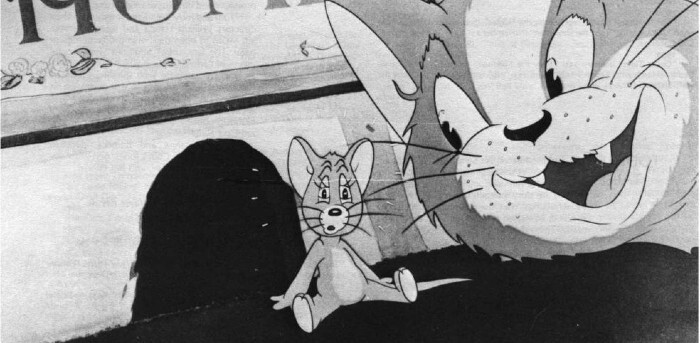
(MGM)
Tom and Jerry weren’t always called Tom and Jerry. In their first short film, 1940’s Puss Gets the Boot, Tom was called Jasper and Jerry didn’t even have a name, though he was called Jinx behind the scenes.
Tom and Jerry
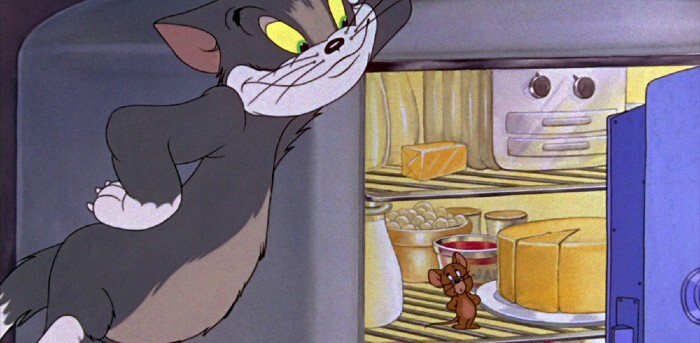
(MGM)
The names Tom and Jerry were decided by a random drawing of suggestions by studio personnel, but the employee who won was clearly playing a prank that nobody else understood. Tom and Jerry were the two main characters of the 1821 novel Life in London, which was basically the Regency era version of I Hope They Serve Beer in Hell, and “Tom-and-Jerrying” became a slang term that meant “to drink and indulge in riotous behavior.”
Oscar Gold

Just about every year of Hanna-Barbera’s original run of Tom and Jerry short films from 1940 to 1958, they were nominated for the Academy Award for Best Animated Short Film, winning seven times. That’s more than twice as many wins as Meryl.
The End of a Hanna-Barbera
The ‘50s presented some real challenges for the team behind Tom and Jerry, including the soaring popularity of television and the studio’s realization that they could just play old cartoons in theaters and nobody would care. By 1958, Hanna-Barbera had produced their last Tom and Jerry cartoon for MGM and, as we all know, never managed to adapt to the world of television.
The Secret Czech Production
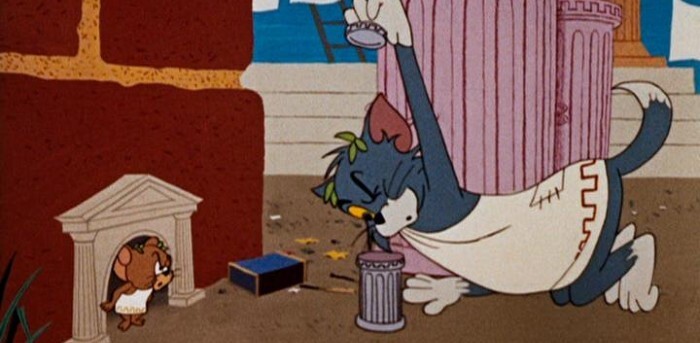
(MGM)
MGM soon “realized that they had made a big booboo,” according to the director who replaced Hanna and Barbera, the leader of a Czech animation team who had themselves just won an Oscar. As they were still living behind the Iron Curtain at the time, they had never even actually seen a Tom and Jerry cartoon and were kind of offended by the whole concept, but they managed to churn out a more emotional interpretation that put the mutual antagonists in increasingly surreal battles in increasingly exotic locations. MGM couldn’t say where these episodes were produced, though, even going so far as giving the animators Anglicized pseudonyms.
Beating Bugs

As different as they were, viewers responded to the sensitive new Tom and Jerry. For the first time in 16 years, Looney Tunes was knocked out of the top spot for most money made by an animated short film series in 1961, a feat Tom and Jerry repeated the next year as well.
Tom and Jerry Go to TV Land
MGM briefly hired Chuck Jones of Looney Tunes fame to take over the series in the mid ‘60s, but soon after, Tom and Jerry went to television, which was probably what should have happened in the first place. They were even back in the hands of Hanna-Barbera, who had become Saturday morning gods.
They’re Immortal
Tom and Jerry rarely actually perish from the violence they inflict on each other, but Tom has died five times, from everything from explosions to the guillotine, and that’s just the original shorts. He also, however, is seen reading about an incident in which he died in a short called Jerry’s Diary, suggesting he regenerates like a video game character.
They Had a Suicide Pact
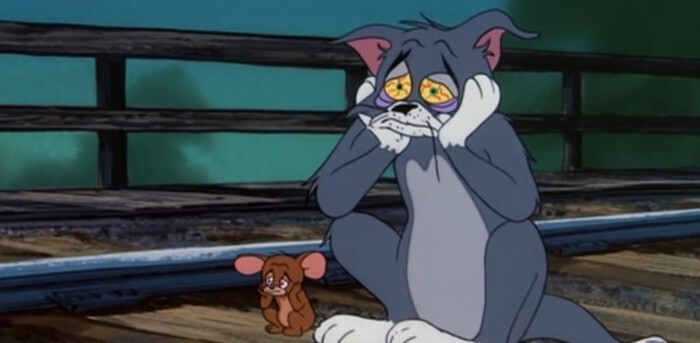
(MGM)
One 1956 short ends with Tom and Jerry sitting together on a set of train tracks with a haunted look in their eyes as an oncoming train blares its horn, then cuts to black. Thanks to a misreading of… oops, it was us, many people believe this was the last episode of the series, and while that’s not true and Tom and Jerry lived on to fight each other another day, it’s pretty clear what their intention was.
The Mammy Problem

(MGM)
The original shorts featured a stereotypical black woman named Mammy Two Shoes, so when they were released for television, MGM instructed Chuck Jones’s team to animate over Mammy with different characters, having realized what a bad idea that whole thing was. Later, her voice was redubbed as well.
Tom and Jerry and Hitler

(MGM)
Mammy wasn’t their only problem. Several Tom and Jerry shorts have been edited for TV or outright banned, usually because a character’s face gets damaged in such a way that miraculously leaves them wearing blackface but also sometimes for truly excessive violence or general insensitivity. There’s even one where Jerry paints Tom to look like Hitler.
International Success
Tom and Jerry were uniquely positioned for international success because they don’t speak, doing away with the need for pesky translations and such. They were such a hit outside the U.S. that they’ve become the subject of a Japanese musical and a Pakistani ice cream bar.
They Do Occasionally Speak
Going all the way back to the Jasper and Jinx days, Tom and Jerry have been given a line or two in a dozen-ish shorts and two films. The lines themselves are disappointingly mundane, so it’s not exactly a Silent Bob situation.
Other Media
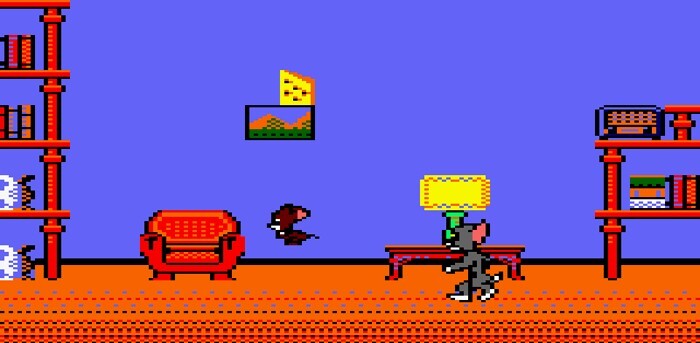
(Magic Bytes)
Believe it or not, there are people who primarily know Tom and Jerry as comic book characters, which they became pretty much as soon as their first short films became successful. Video game creators also figured out early on that it’s really fun to play as a pyromaniacal cat, so the Tom and Jerry video game industry has been going strong since 1989.
Back to the Big Screen
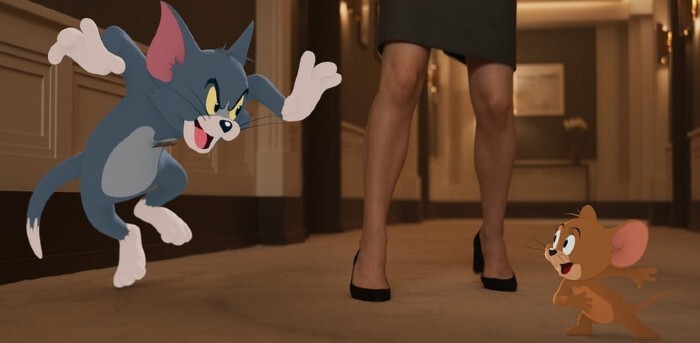
(Warner Bros.)
Tom and Jerry got their first official movie in 1992, but before that, they made cameo appearances in other MGM movies, dancing with Gene Kelly and swimming with Esther Williams. They got their latest cinematic treatment as recently as 2021, scoring a whopping 31% on Rotten Tomatoes. Oh, how the mighty (mouse) have fallen.
Top image: Warner Bros.